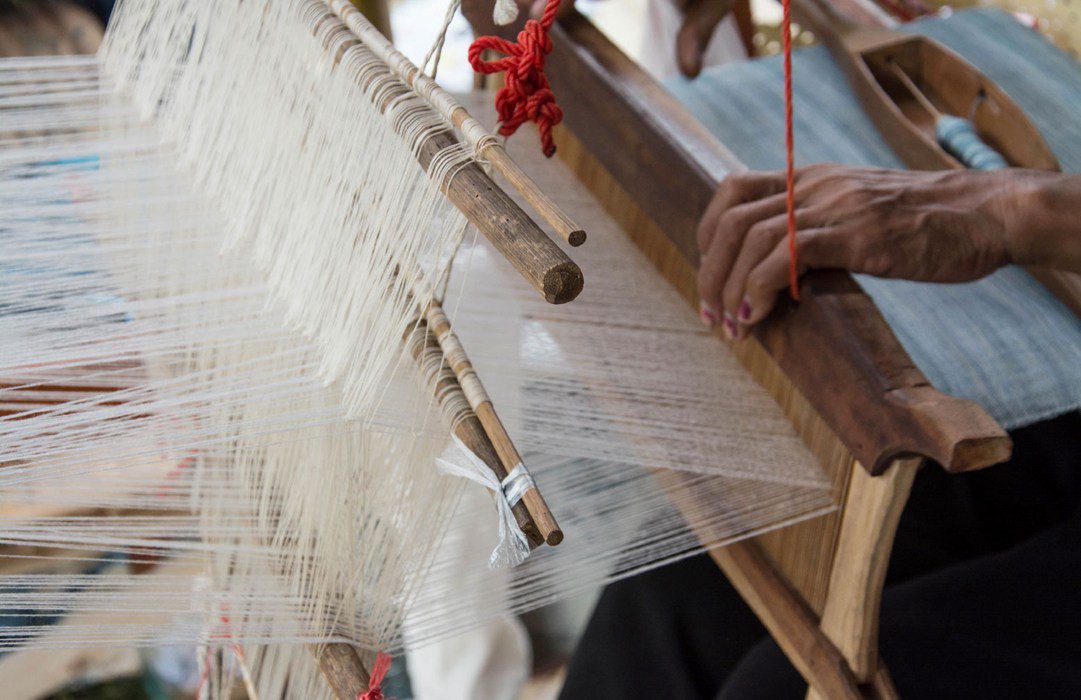Circularity in Textiles ︎︎︎
Pilot Project, 2019, India
The global textile industry generates approximately 92 million tonnes of waste annually. This waste is majorly dumped in heaps, in landfills or burnt.
Textile Design, Sustainable Social Innovation, Life Cycle Analysis, End of Life, Service Design


As designers, can we do something about it?
In 2019, on a visit to a weaving center, I asked myself the same question.
1. Problem Overview
During an exploratory visit to several weaving clusters in South India, where esteemed handloom hubs such as Pochampally Ikat are located, I observed numerous bundles of vibrantly colored, intermingled yarns strewn across the workshops.
Intrigued, I approached a weaver to gain insights into the nature of these bundles.
"These are waste yarns discarded due to reasons such as color inconsistencies, canceled orders, quality shortcomings, and defects."
I pursued further clarification, asking,
"Is it not feasible to weave them into fabric?"
He responded with a sense of finality,
"Utilizing them again for fabric creation would only lead to additional expenditure of time and energy, yielding insufficient returns. Consequently, these yarns are relegated to being used as rags, or are disposed of, or incinerated."
A lot of yarns in the weaving sector go to waste due to color mismatch, quality issues, and other defects. About 80% of these yarns are chemically processed with chemical dyes and artificial fibers which have insoluble and non-biodegradable ingredients making them challenging to decompose and discard.
2. Potential Connections
- In 2019, there was a noticeable resurgence of interest in interior art projects, particularly within the textile industry. This revival was largely characterized by a focus on mythological themes, interpreted through the lens of traditional crafts.
- Consequently, this trend led to a surge in demand for tactile art panels across various interior design projects that our studio was orchestrating.

3. Process
We began exploring a diverse array of textile techniques; however, many of them proved to be exceptionally time-consuming and did not align with economic sustainability.
Over the next few days, a new technique was explored, which was called “punching needle technique” often used for thicker yarns in hand embroidery sectors.
4. Ordo Ab Chao
The Latin phrase "Ordo ab Chao," meaning "Order out of Chaos," established the thematic foundation for this artwork. It not only symbolized the transformation of each yarn into a unified piece of art but also metaphorically echoed the often disorganized waste management practices prevalent in the fashion and textile industry.
In the creation of the artwork, color blocking was employed within fundamental geometric shapes. This approach artfully brought together contrasting colors within a single frame, imparting a sense of organized chaos. The piece, while echoing the principles of the Bauhaus movement, introduced a contemporary and playful palette.
In the creation of the artwork, color blocking was employed within fundamental geometric shapes. This approach artfully brought together contrasting colors within a single frame, imparting a sense of organized chaos. The piece, while echoing the principles of the Bauhaus movement, introduced a contemporary and playful palette.
Through this endeavor, discarded materials were not only given a new lease on life but also transformed into a symbolic representation of creativity and sustainable practices.
The artwork "Ordo Ab Chao" thus stands as a testament to the potential for beauty and order amidst chaos and waste.


5. Service Potential
- Sustainability
- Unique Aesthetic
- Customization
- Supporting Weavers
- Economic Viability
By utilizing efficient techniques like punch needle embroidery, production time and costs can be minimized, ensuring economic sustainability.
- Scalability
The model can be easily scaled up to meet increasing demand or diversified into various product lines such as home décor, accessories, etc
-
Community Engagement Workshops and educational initiatives can foster a community around the brand, enhancing customer loyalty.
- Strategic Partnerships Collaborations with interior designers, real estate developers, and textile units can open new avenues and channels for consistent demand and supply.